Your cart is currently empty!
{ TOP 10 } Best Ice Axe – June 2020 Reviews
Views: 0
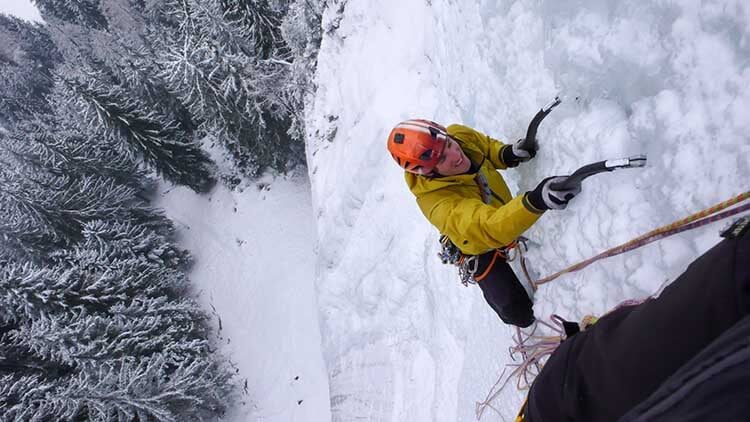
If you’re a mountaineer or hiker that’s venturing out into snow-covered terrain, an ice axe is a vital piece of equipment. Used for self-arresting and winter walking, ice axes are invaluable when you’re out in the mountains.
But, there are dozens of different models of ice axes available today, so it can be difficult to know precisely which is right for your needs. To get you started, we compiled this buyer’s guide to ice axes. Up next, we’ll discuss some of the most important features to look out for when buying a new ice axe. Plus, we’ll even review ten of the best ice axes for backpacking, mountaineering, and skiing so you can find what’s best for you.
Buying an ice axe is a serious investment that could make a huge difference in your safety when you’re in the mountains. So, to help you decide what you need in your next ice axe, here are some of the top features to keep in mind when shopping around:
Length
The length of an ice axe greatly affects its performance in the mountains. That being said, more often than not, people end up using an ice axe that’s too long for them. While having an axe that is too short really isn’t much of an issue, an ice axe that is too long can hinder your walking ability and make self-arresting quite difficult.
The general guideline for ice axe length is that you shouldn’t buy an axe that extends past your ankle when you hold it next to your leg. However, in steeper terrain, it’s better to use a shorter axe because it helps stabilize a climber’s center of balance better than a longer model. Indeed, a longer ice axe makes moving through steep terrain, so smaller is usually best.
While everyone has a personal preference for the length of their ice axes, here are some general size guidelines, based on height:
- People under 5’6” (167cm): 45-50cm
- People 5’6” to 5’8” (167-172cm): 50-55cm
- People 5’9” to 6’0” (172-182cm): 50-60cm
- People 6’1” to 6’4” (185-193cm): 50-65cm
- Over 6’4” (193cm+): 60-70cm
Since an ice axe will spend most of its life either in your hand or on your backpack, it’s a good idea to look for one that’s relatively lightweight. The lightest ice axes will be made with an aluminum shaft, which is the material with the best weight-to-strength ratio for this purpose.
However, just because an ice axe is made with an aluminum shaft doesn’t guarantee that it will be lightweight. Generally, added features, like handles and grips, will increase the weight of an ice axe.
Weight-saving features on an ice axe include single-piece heads, which cut down on the weight of a more traditional two-piece alternative. Some ultralight axes even do away with the spike at the bottom of the axe, opting instead for a sharp point at the bottom of the shaft to save weight.
Pick Shape
Modern mountaineering axes use picks that are slightly curved to help improve performance in firm snow and ice. These days, the majority of axes will have something called a “positive” curve, which is a slight downward point throughout the pick. This type of pick is a good compromise between climbing ability and traction while self-arresting.
Another option is the neutral curve, which is a pick that is more or less straight. This is the best type of curve for self-arresting but provides poor performance while climbing. Finally, we have reverse curve picks, which has a sharp downturn that then curves back upward. Reverse curve picks are less ideal for self-arresting but are great for ice climbing and steep terrain.
Materials
There are two main materials that are used in modern ice axes: steel and aluminum. Steel is the most common material used in ice axe picks and heads. This is because steel is strong, hard, and less likely to bend when swung into firm snow and ice, especially when compared to titanium, which is lighter.
When it comes to the shaft of an ice axe, aluminum is by far the most common material. Aluminum is well-known for its high strength-to-weight ratio, which is ideal for use in a product that needs to be both durable and portable.
However, aluminum is weaker than steel, so isn’t really ideal for use in axe picks. Additionally, while there are some new ice axes that use aluminum heads to save weight, these are less durable in the long term, and won’t hold up well throughout heavy use.
While steel and aluminum are, by far, the most common materials used in ice axes, we occasionally see some axes made with titanium. Titanium is gaining popularity because it is lighter than steel but is slightly stronger. That being said, it’s not an ideal material for this purpose because it actually bends quite easily and really doesn’t offer much weight savings when compared to aluminum.
Leashes
A leash is a length of webbing that helps keep an ice axe attached to a hiker or climber’s wrist. They’re useful because they stop someone from accidentally dropping an incredibly important piece of gear while in the mountains. However, there are some hikers and climbers that find leashes to be cumbersome, so it’s really a personal choice. Some modern axes will come with a leash while others require you to purchase one separately.
Best Ice Axe on the Market Review
Here are our reviews of the 10 best rated ice axes around:
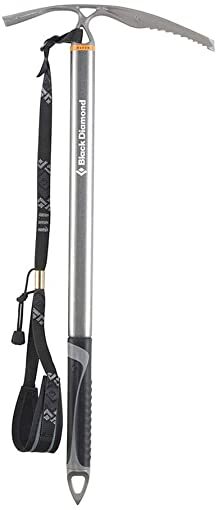
The Black Diamond Raven is a revamped take on a classic mountaineering axe design. One of the best all-around options for backpacking and mountaineering, the Raven features a low grip for more comfort and functionality in the mountains.
The Raven is built with aircraft-grade aluminum in the shaft and has a one-piece stainless steel head to secure the pick. This ice axe is CEN-B rated and has a pick that’s specifically designed for improved traction while self-arresting. It also comes with a slider leash so you never lose your axe during your winter walking adventures.
- Dual-density molded grip for security
- Included slider leash
- Durable aluminum shaft
- Not great for climbing or technical mountaineering
- Heavier than other options
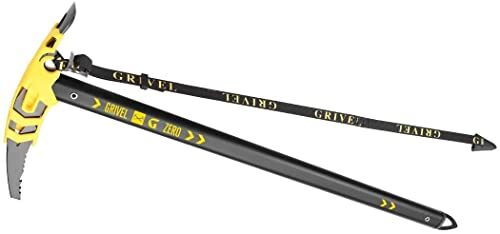
Engineered specifically with backpackers and easy ice climbing, the Grivel GZERO is a classic ice axe with an updated look. The GZERO is made with an aluminum shaft and steel blade, that are curved for maximum traction while sliding.
However, while winter walking with an ice axe often results in cold hands, the Grivel GZERO has a unique plastic grip cover to keep your hands warm. Plus, this easy-to-remove cover can help improve your grip and control while self-arresting, so it’s really the best of both worlds.
- Plastic pick grip keeps hands warm
- Includes a slider leash
- Durable aluminum shaft construction
- Has great color options
- Affordable
- Not great for very steep terrain
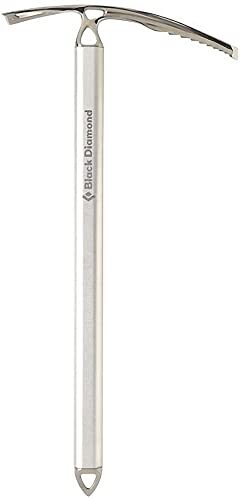
Lightweight and versatile, the Black Diamond Raven Pro is a revamped version of the original Raven. This classic ice axe is one of the best backpacking ice axes around, thanks to its lightweight.
It’s made with a lightweight aluminum shaft, a one-piece ergonomic stainless steel head, and an aggressive CEN-B certified pick for use in the mountains. Perfect for use while self-arresting or for navigating a tricky crevasse field, the Black Diamond Raven Pro is a do-anything ice axe for any mountain pursuit.
- Lightweight
- Versatile
- Durable aluminum shaft construction
- Somewhat expensive
- Doesn’t include a leash
- Slick shaft makes grip tricky for newer hikers

One of the best mountaineering ice axes for climbers on a budget, the Camp USA Neve is made from forged Chromoly steel in both the pick and the adze. The Neve features a curved adze that allows for a more natural handgrip and for better step cutting performance.
It has carabiner holes in both the head and the spike for quick and easy anchor placements. Plus, the Neve’s symmetric steel spike makes plunging in deep snow a breeze while the included sliding leash ensures your axe stays with you as you climb.
- Symmetric spike improves plunging
- Curved adze for better grip and step cutting
- Durable steel head and adze
- Includes a sliding leash
- A tad bit heavy
- Short leash design can be annoying to some climbers
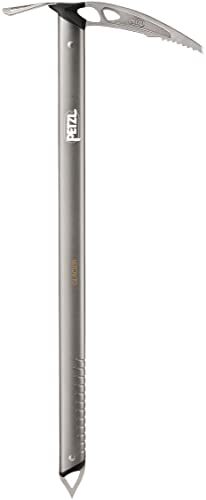
Ideal for creating anchors in hard snow, the lightweight Petzl Glacier is a ski mountaineer’s best friend. Designed specifically with weight and comfort in mind, the Glacier features a comfortable grip that makes chopping steps and self-arresting a breeze.
As one of ice axes for ski mountaineering, the Petzl Glacier has a high-quality steel pick, similar to what you’d find on a technical ice axe, as well as a strong steel adze for easy step chopping. Plus, the handle that’s cut into the Glacier’s lightweight aluminum shaft makes technical climbing sections a breeze while in remote terrain.
- Very lightweight
- Handle cut into shaft for comfort and grip
- Great for anchoring in hard ice and snow
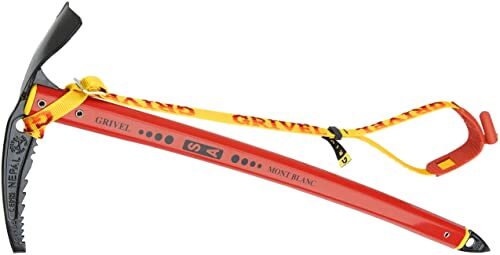
Made for hikers and classic mountaineering climbs on glaciers, the Grivel Nepal features a forged steel blade and a simple curved adze. The Grivel Nepal has a slight curve to the shaft, which is nice for beginners, as it helps create more traction with a self-arrest.
The Nepal has a lightweight aluminum shaft for comfort and ease of use in the mountains. Additionally, it has a simple, yet convenient, included slider leash and a rubber tip protector for added versatility on your trips in the backcountry.
- Slightly curved shaft for better self-arresting
- Lightweight yet durable
- Included slider leash and rubber tip protector
- Not ideal for steeper terrain
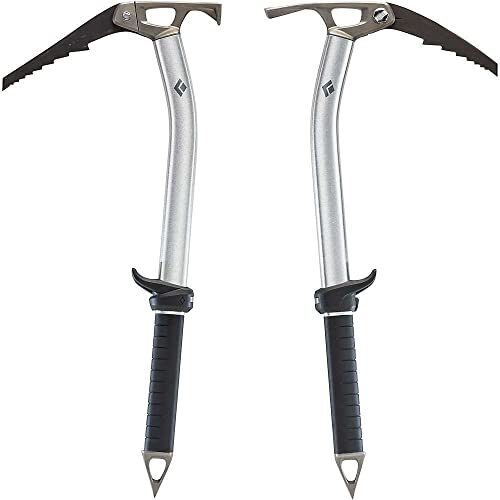
A hybrid between a technical ice tool and a classic mountaineering axe, the Black Diamond Venom is an ideal companion for mixed climbing and winter walking. The Venom features a bent shaft construction that makes it one of ice axes for ski mountaineering on the market today.
It has a solid stainless steel head with an integrated adze, as well as an interchangeable pick construction so you can choose what works best for you. The Venom’s adjustable FlickLock pommel also makes it easy to customize your grip for a variety of different climbing conditions.
- Great in steeper terrain and mixed conditions
- Sliding pommel for multiple grip options
- Interchangeable picks for added versatility
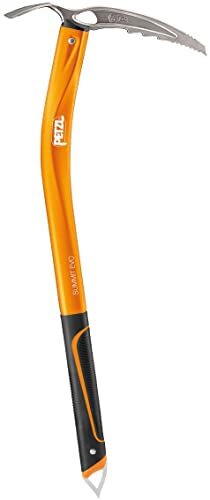
Specifically made with technical performance in mind, the Petzl Summit EVO is a high-quality ice axe for any mountain pursuit. The EVO is perfect for light and fast alpine trips, where effectiveness is key.
The EVO features a curved shaft design for added control while self-arresting and comfort while climbing. It also boasts a forged single piece head for maximum durability as well as a hydroformed handle for exceptional performance in steep terrain.
- Curved design for better self-arrest and climbing performance
- Single piece head for durability
- Lightweight
- Expensive
- A bit overkill for summer hiking trips
- Doesn’t come with a leash
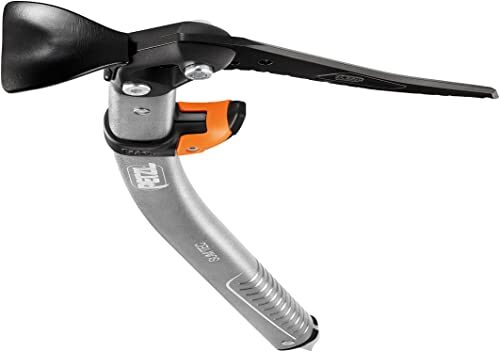
Versatile to the core, the Petzl Sum’tec is a highly adaptable ice axe that can be used for classical mountaineering or winter walking. It has a curved shaft for better performance while anchoring, though the shaft is still straight enough for comfortable walking.
The best part? The Sum’tec can easily be customized to your chosen pursuit, thanks to its completely interchangeable picks, adzes, and hammers, making it one of the best mountaineering ice axes around.
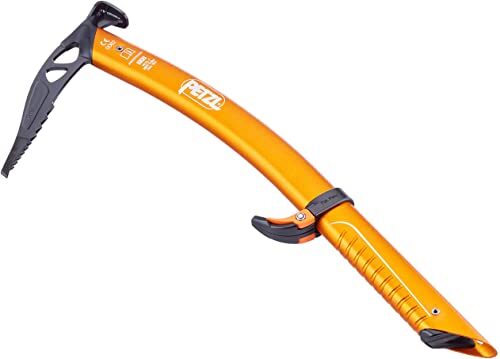
The lightest ice axe in our review by far, the Petzl Gully is a best friend of PCT thru-hikers, ski mountaineers, and winter climbers, alike. This highly technical axe has a unique, banana-shaped pick for easier swings, while the minimalist adze and head design helps cut weight.
The Gully even has a TRIGREST handrest that’s adjustable without any added tools, so you can quickly adapt the axe to meet the needs of the terrain. Plus, it has a tapered, beveled spike that allows for easy transportation without risk of destroying your pack.
- Very lightweight
- Easy to adjust handrest
- Banana-shaped pick for better swings
- Very expensive
- Can’t swap out pick
An ice axe is any mountaineer’s best friend. So, when choosing the best ice axe, it’s important to prioritize your needs. Whether you need a highly technical axe for high-angled terrain or a lightweight model for crossing occasional snowfields, there’s the best mountaineering axe out there for you.

Sarah is a lifelong adventurer with a passion for sharing her experiences with the world. You’re equally likely to find her sending hard on a long alpine route as you are to find her typing away on her next feature article at a local coffee shop. Whether it’s sport, trad, bouldering, or even ice climbing, Sarah enjoys getting out there and pushing new limits. She loves sharing her experiences with others so they can get out and climb, too!